Here we are going to explore the tips to ensure that Google likes your content.
Content writers know how important search engine optimization is. But the more you read on the subject, the more confusing it sounds. There are as many opinions as writers.
This is what Google says on their help site about how they rank web pages.
Give Visitors the Information They’re Looking for
Provide high-quality content on your pages, especially your homepage. This is the single most important thing to do. If your pages contain useful information, their content will attract many visitors and entice webmasters to link to your site. In creating a helpful, information-rich site, write pages that clearly and accurately describe your topic. Think about the words users would type to find your pages and include those words on your site.
That sounds great, but how do you know that you’re giving visitors the information they are looking for?
There’s a Tool That Can Help
I created the app, INK, for content writers like you. We’ve analyzed Google’s algorithm and determined what it looks for in ranking sites.
INK is free to use. You enter your keywords or key phrase and it analyzes your competing sites. It also provides customized tips to help you improve your ranking.
Below, we’re going to discuss the content tips Google likes to ensure your site ranks higher.
Tip #1: Get to Know Your Audience
Please don’t forget this. The number one influence on your content’s search engine ranking is how efficiently you answer the searcher’s question.
A person enters a key phrase in Google. They are looking for answers. If your content solves their issue and does it with authority, it will increase your SEO ranking.
Go as deep into your subject as your target audience will tolerate
But first, you need to get to know your audience.
- Are they members of a technical organization?
- Who are the thought leaders in the industry?
- Is there certain vocabulary or terms they use?
- Do they use these in a different way?
- What social media sites do they visit?
- Is there an age range that you’re writing for?
This will help you identify what key phrase you are targeting.
Then, put yourself in the searcher’s mind. Ask yourself what sort of answer are they expecting.
For example, a person searching for “how do I start a square foot garden” has certain expectations. They are most likely wanting a bulleted list of building materials. The site will be picture rich. Maybe a video demonstrating how to build the garden.
These expectations are quite different than someone searching for “how do plants synthesize high energy carbohydrates.”
Give the audience what they are expecting.
Tip #2: Research Says That Google Likes Longer Content
According to an in-depth study by SerpIQ, the highest-ranking pages are typically longer.
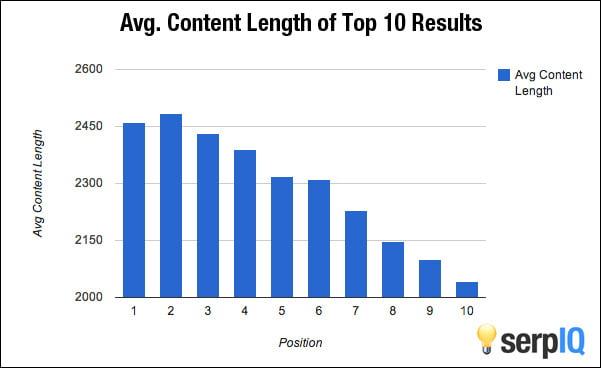

Stop! Understand this. It’s not necessarily the length that is so important.
Let’s be honest. No one wants to read 2,000 words of nonsense if it can be said in 500.
In principle, however, longer articles better explain the searcher’s entered key phrase.
Strategies for Adding More Content
Don’t stuff your article with redundant information just to achieve a word count. Make sure your content is fresh and adds value.
As I mentioned above, before you began writing you should have researched your keywords and gotten to know your target audience. Searchers are most often looking for the following words when they are reading subheadings.
- Tips
- Strategies
- Tactics
- Ideas
- Methods
If you’ve answered the question, then consider adding the following words with in-depth explanations.
For example, let’s consider this article. I could have said, “Here. Read what Google wrote.” That technically answers your question, but it doesn’t give you tips and strategies on how to ensure Google likes your content.
I’ve enhanced your reader experience by giving you suggestions and explaining those tips with examples.
This is how you create longer, richer content which Google rewards with a higher search engine ranking.
INK Analyzes Your Competition and Tells you how Long Your Article Should be.
I mentioned above that I’ve created a content writing app called INK. You enter your key phrase and it checks your competition telling you what number of words you should aim for.


Remember the tips above. Google wants great content that answers the searcher’s question and not just redundant words.
Tip #3: Readability is Key in Google SEO
This is where knowing your target audience is critical. As Google wrote, “Give visitors the information they’re looking for.”
Readability is the ease in which your target audience is able to digest written text. It’s really that simple.


For example, a searcher types in the key phrase “what to pack for Paris summer.” They are expecting an explanation that answers their question. It will most likely provide a checklist of types of clothing and discuss the weather for the summer months.
If this first link the searcher clicks on is written in French. Then the searcher quickly exits the page and looks for one in English.
They were unable to digest the written text. Google tracks these exit points.
Another factor in readability is the proper use of grammar. A site that has typos, poor punctuation and misuse of words will give a bad impression of the author. They are not deemed an authority on the subject matter if they are thought to be illiterate.
The reader doesn’t want to slog through typos in the prose to find their answer. Google looks for this. It will punish the site by ranking it lower. Keep in mind that this will happen even if the information that is presented is correct with high authority.
This is a pitfall that occurs when someone is writing in a language that is not their primary one.
If your audience is looking for technical terms, then use them correctly. If your audience is not technical, keep your vocabulary simple.
Read the competing articles that Google has chosen to rank. What do they have in common? Notice the sentence structure, paragraph usage, images, and vocabulary. Target your writing to this level.
INK Does This for You
After you’ve entered your keywords or key phrase, INK identifies your competition and gives you real-time stats of how you should target your content.


INK also checks for hard to read sentences that might be confusing to your searchers.
Most importantly, it checks for grammar errors. No one wants to wade through content that is filled with typos, misspelled words, poor punctuation, and improper word usage.
It helps you target your writing to the correct reading grade level. This is important to ensure your target audience will understand what you’ve written.
Tip #4: Image Use is Critical to Google SEO
Would you want to read an article that looked like this?


Images enhance the reader’s experience. They invite the reader in and hopefully make them want to stay awhile.
Research says that people are 80% more likely to read content that includes an image and 64% more likely to remember it afterward.
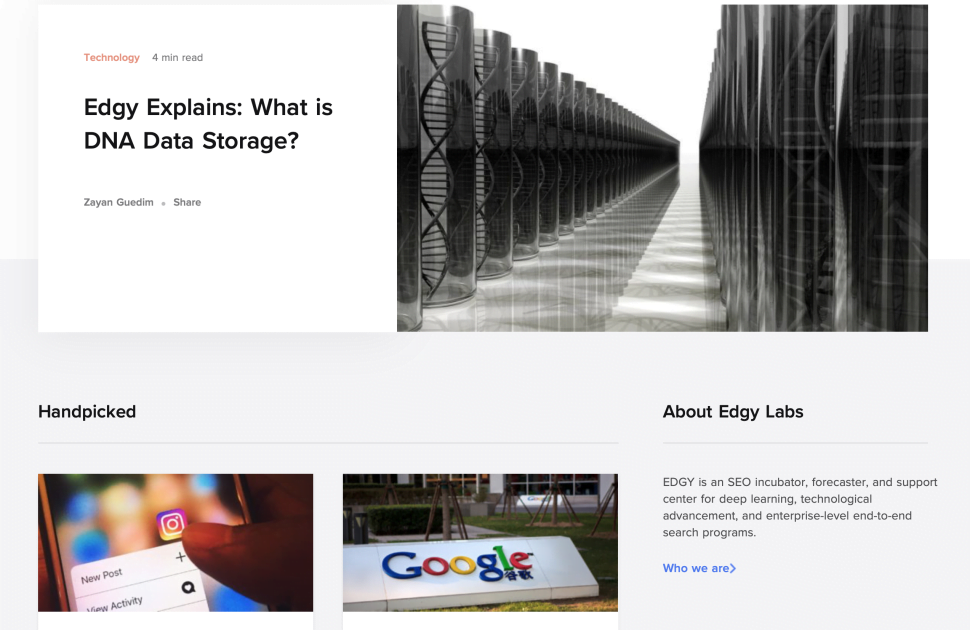

Images are a big part of how we experience a web page. They act as page breaks and help explain your keywords.
That matters for SEO because Google’s algorithm pays attention to the reader’s behavior. Google looks positively on pages where readers tend to stay for a while.
But images can also be optimized to more directly help with SEO as well. Most visitors to your site will only see the image itself. However, search engine crawlers see the text behind the image. You can control exactly what they see.
Optimize your image ALT text and image captions to help Google learn more about what your site is about.
Make sure your pictures are also great quality but too large of file size to slow down the page loading time.
This is a lot to Remember. INK Optimizes Images.
INK has a built-in image optimization feature. You choose what image you want to load into your content and INK does the rest.


INK also has an image ALT text feature that assists in optimizing this important factor in your image SEO.
INK is free to use. Download it and see how great your images can look.
Tip #5: Structure Your Article
We discussed what readability is above and its importance to your Google SEO.
Let’s now talk about how the use of headers, subheaders, and pictures affect your SEO.
Here’s the cold, hard truth. You can spend days crafting the perfect blog post, but people like to read fast. They do it because they have limited time and are quickly looking for their answer. If they can find what they’re looking for easily, they tend to read the rest of what you’ve written.
Your content needs to be organized in a reader-friendly manner.
The key to this is a clear structural hierarchy. By that, I mean that your content needs to be logically organized within an article.
If you noticed, I quickly answered my key phrase in the first couple of paragraphs by telling you the short answer. Then, I’ve used headings and subheadings to organize the tips to ensure Google likes your content.
If you already knew about the importance of images to your SEO, you may have chosen to skip that section and read this one instead.
Same copy. One side is properly formatted. The other side is not.
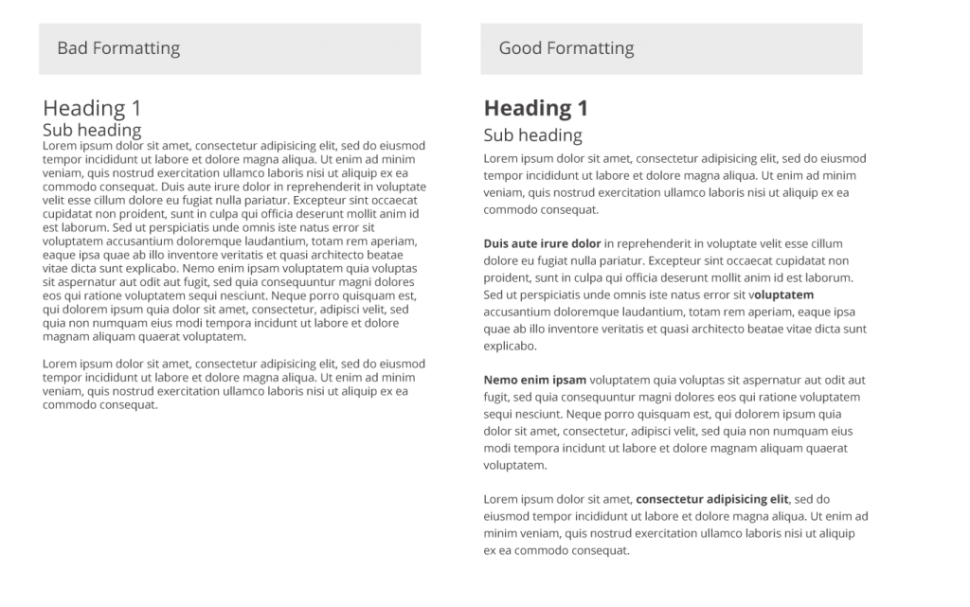

Use pictures to help break up text. Organize your content. It’s okay to use bold font to emphasize a point.
INK Helps you Organize Your Content
INK tells you if you have too many words without the use of a header.
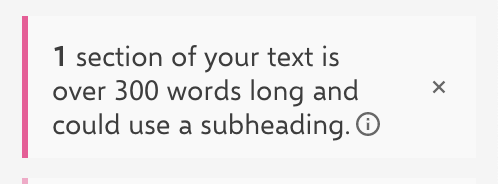

This seems obvious, right? However, what you think is topically correct and what Google thinks might be two different things.
Once again, let’s use this article as an example. Before I began writing, I did my research. I identified my key phrase. I got to know my target audience.
I typed my key phrase into INK. It told me that I needed to aim for 1906 words and a reading grade level of around ninth grade.
I did my research and was ready to write. However, I’m near the conclusion to my tips to ensure Google likes your content, and I’m only 85% topically complete.
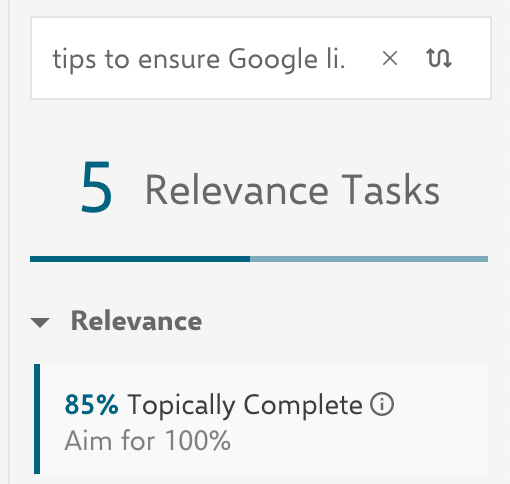

This is how INK defines topically complete.
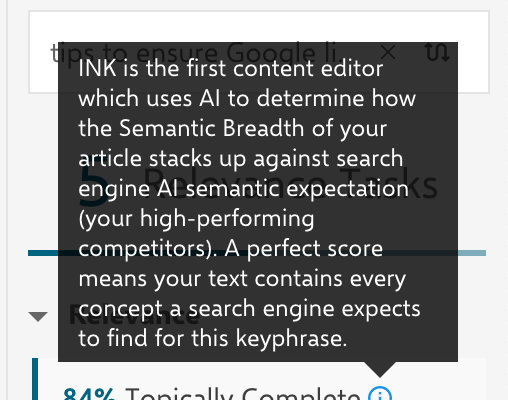

It’s the first content editor that analyses your competing websites and scores your content.
INK gives me tips on how I can rank higher. I haven’t added a meta title or description yet. I need to consider using my key phrase in a heading.
Summary
Creating great web content is not as easy as just being a competent writer.
You have to learn to write for what Google is expecting. This is the only way to ensure that Google likes your content.
Don’t pick and choose the tips mentioned above. They all need to be combined together to work in unison to improve your search engine ranking.
I also recommend using INK. It’s free to download and use.
I created it to help content writers, like you, rank higher. It combines all the facets of search engine optimization that Google looks for.
With real-time analytics, if you do your part in writing for your target audience and answering their question. INK will give you the data that you need for your site to rank higher.

